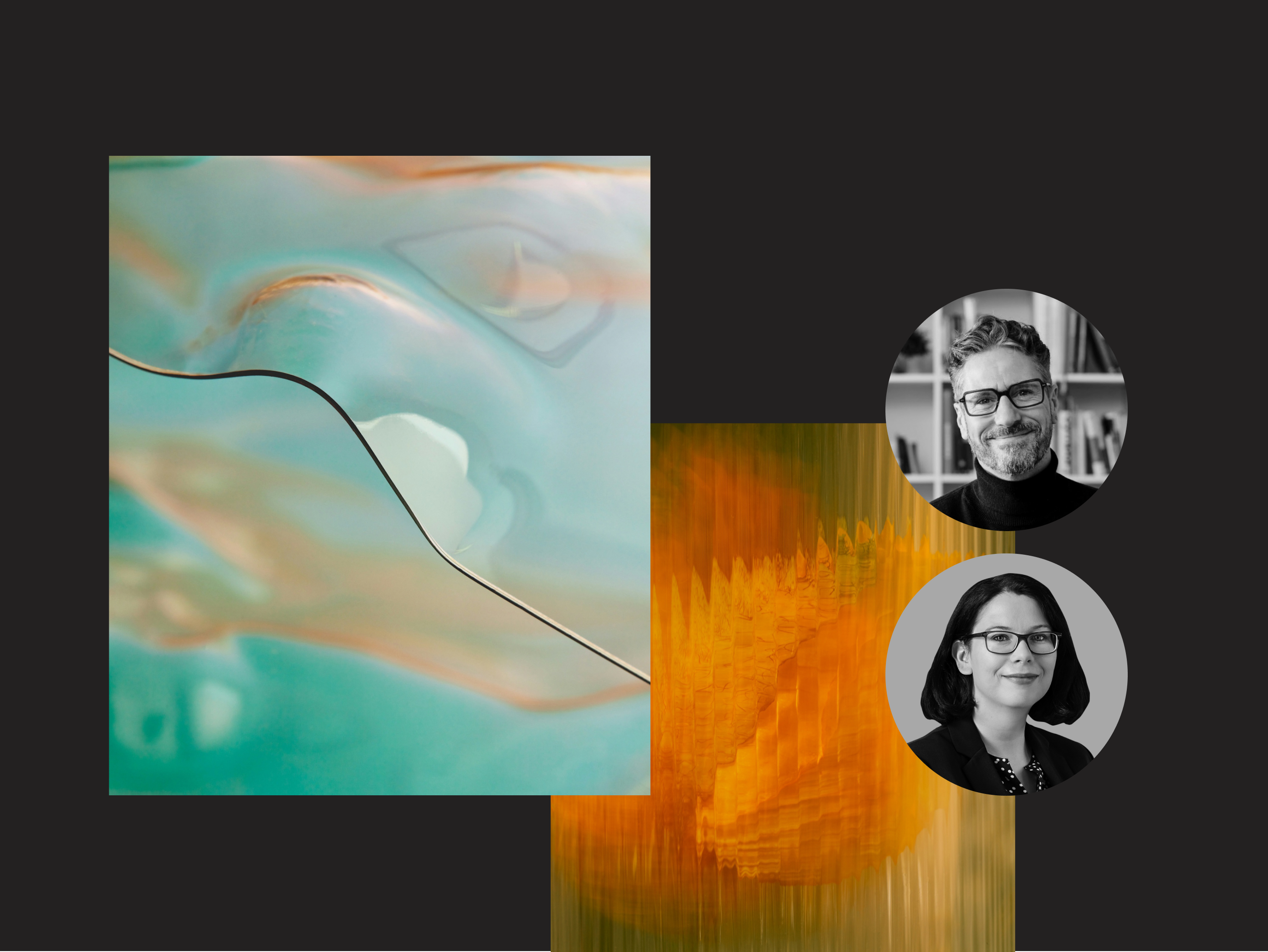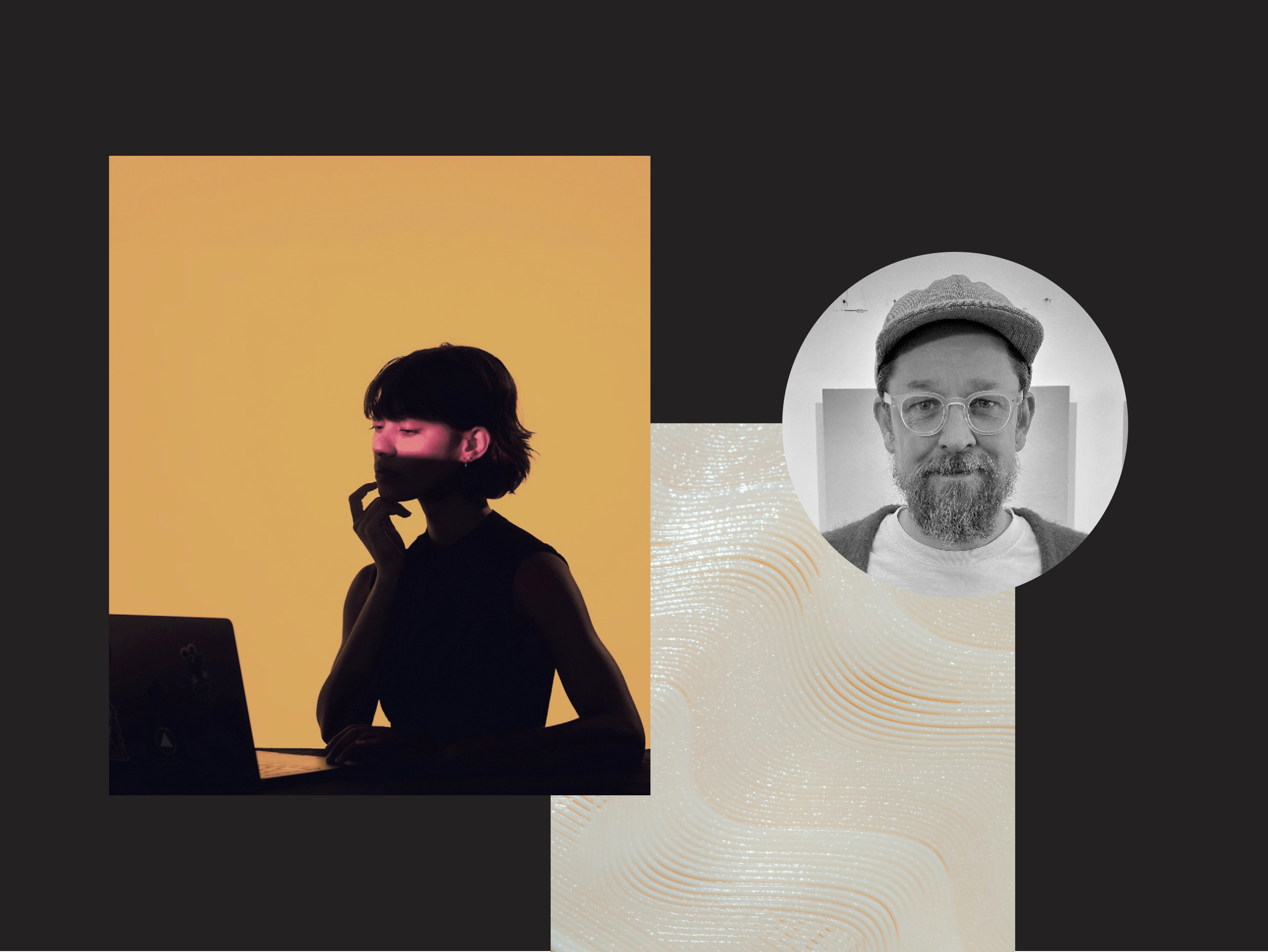We sat down with Nicole Adelt and Erik Wankerl from redpepper to discuss this topic. Nicole is Head of Digital Branding, and Erik is Managing Director of Creation & Innovation. Together this creative powerhouse team discusses practical uses for generative AI and the individual’s responsibility in regulating the tools they use.

Toby: What do you find exciting about generative AI?
Nicole: It gives us new opportunities to expand our skills as designers. We can create worlds we could never create before – on our own and as a single designer. It's actually an empowerment, and we become more independent because we're designing all kinds of media – even if we're not experts in, say, 3D or audio.
Erik: And it's mainly the incredible speed at which generative AI delivers results. In the case of text, almost in real-time, and in the case of images, within minutes. What really impressed me at first was Midjourney because suddenly, I could visualize ideas very quickly that used to take research, scribbles, and Photoshop composites. And sometimes in a quality that could be published straight away. It opened up a whole new world of possibilities, especially in terms of content or art production.
Nicole: And for branding, you theoretically have the full toolkit to express the core design principles at every level. It's still early days for the 'end products'. However, the pre-draft stage is already possible and can be used in client projects. I use it for explorations or initial briefing drafts. Eventually, the whole process could be automated – so it's time to think about the future of branding: it's clear that our work will change. We don't know how fast it will happen or where it will end, but it is accelerating. In design, we have always had shifts and changes in our workflows and tools. So it's a new round of refreshing our work and our own aesthetic(s).
Toby: Nobody wants their role to be completely done by AI, but where do you think generative AI could help creatives in your agency to get the most out of their creativity?
Erik: ChatGPT can act as a sparring partner and a creative springboard. On the other hand, ChatGPT can also correct, structure, translate, and to some extent even generate text. In the realm of generative image development, photos, illustrations, or graphics can be created to develop visual languages or populate set books. Depending on the briefing, final images may also be produced for websites, social media, or print. As the briefing becomes more specific, the process becomes more complex as different tools need to be combined to achieve a good result. For example, I might create an initial sketch using a Photoshop collage, use this as an image prompt for Midjourney, make partial changes using Adobe Firefly or StableDiffusion, and finish in Photoshop. The same principles now apply to video as well.
Nicole: So AI is like a buddy in the creative process. We should respect the new technology and come up with ideas to integrate it into our work.
(AI is...) like a new colleague that you have to "get to know" and integrate into your workflow. The team member is here to stay, so it's a good idea to get over your fears and start working together – respectfully.
And with every new team member you learn something new, and it broadens your horizon; that's how I see AI. I don't think it's a good idea to completely outsource our creative work to AI, but it's a good idea to combine our skills, mindsets, and workflows. Maybe we need to find our own AI style, how we work, and how we produce results in a collaborative AI process. This is exciting because the combination of skills and different tools like Midjourney, Adobe Firefly, Stable Audio, and Runway will create something new, and we will get the most out of our creativity and the best of both worlds: human & artificial.
Erik: And the quality factor will change. There will be a lot more content in the future, especially AI-generated content. Whether the text here was written by an AI or the image was created by an AI, no one will be interested – and no one will notice. Standing out, attracting attention, and differentiating from this mass of interchangeable, generic images and text will become even more important. Branding is ultimately about individual style, unique character, and stories that are consistently felt across all touchpoints. Creativity is shifting even more towards storytelling. Concept is more important than execution.
Toby: Do you think generative AI needs regulation - and how does that idea connect with creativity?
Erik: This is a complex issue with many facets. There is, of course, the risk of deep fakes, copyright issues, or ethical concerns. We also see AI learning biases and reinforcing prejudices. This has to be taken into account, and efforts should be made to regulate it. However, I doubt how effective this can be, as AI development is progressing exponentially, and it may be difficult to keep up. An important question will be whether AI can be kept away from critical systems. I don't think that kind of regulation has much to do with creativity because, of course, there will always be a human involved in judging and curating. In fact, I also observe that the "automatic" creativity in AI is decreasing. Results are becoming more standardized and similar.
AI doesn't really think in new and innovative ways; it learns what's popular. This means that real creativity will continue to be in the hands of skilled creatives.
Nicole: Well, I have three views on regulation:
- Everyone has a responsibility. The AI models learn things; we teach them. If you look at some of the tutorials or prompts, you are surprised by how stereotypical the visuals become. So, we should try to change the stereotypes through feedback or just stop adding old-fashioned visual ideals. It is a kind of self-regulation. We're at a crucial point in history: we are at the beginning of what is to come. When I was studying design, we were told to keep an eye on visual pollution. I reframe that: we should be aware of what we are teaching, prompting, and defining when we use AI.
- On the other hand, there might be a general regulatory issue when it comes to manipulation and misuse. Almost everyone puts pictures, videos, and private details into their social media accounts. This data is collected and now it can become risky because it can be used to produce 'fake' content. I don't know how we will label content as "authentic" in the future, but it could become dangerous in a political sense.
- For illustrators, photographers, designers... there is another dimension of risk in data collection. Their work is being 'aggregated', 'simulated', and 'generated'. There are questions of ownership and value of creative work that we need to find answers to. This affects the work and livelihoods of creatives in general.
Erik: Agencies will also see their business models change from service providers to product developers. Typically, small and medium-sized agencies have only one currency, the hour. And that is finite. Now, there are opportunities for agencies to invest their expertise in new tools and develop products that can be marketed differently. The whole industry is undergoing this very rapid and massive change and needs to consider how it will survive in the future, from freelancers to agency owners.
Toby: Although generative AI makes it easier and more accessible to be creative, do you think there’s a diluting effect on that creativity because of how accessible it is?
Nicole: I ask myself the same question. How will the agency world change? And how will my work and my job change with the rise of AI? To be honest, the work of design and creativity has always had a contradictory discussion at its core. In Germany, for example, look at how well-paid consulting work still is and how much less design/creative work is often valued. This is an old battle that could become even more intense in the future. Our creative work has great potential and is highly valuable. Ask yourself why the design thinking method copies the workflow of designers to make it accessible to others in innovation processes. Meanwhile, designers are underrepresented in key leadership positions.
With AI, all our core activities, like associating, exploring, playing, brainstorming, designing, and doodling... will be copied, simulated, and generated. So, the fear is real, but there is something else we need to keep in mind. You are always defining, highlighting, troubleshooting, expanding your skills, and creating something new. That, too, is creativity. So, the accessibility of creative content will be a big issue, but how we design, select, and make something unique could keep us in the game.
Erik: And that is a question of looking at creativity. Real creativity is innovative and novel. What I see right now is more standardization than real creativity.
The quality of creativity is not increasing. But the quantity is. There will simply be a lot more content than we already have.
Of course, this raises questions about job displacement. On the other hand, it also an opportunity to differentiate through real creativity, excellent design, and compelling copy – something that may become increasingly valuable in a growing sea of content.
Toby: So, is it easier or harder to be creative now compared with 5 years ago, with generative AI creating a sort of simulated creativity so easily?
Erik: Clearly easier, like many things in life. Driving with a navigation device is easier than navigating with a map. Creating a website wasn't possible for a layman 10 years ago, but now it's possible with DIY platforms. It's also becoming easier to create creative things like little birthday poems or a cool Lego-style illustration of a tuned car. Creativity is becoming more accessible to the masses, and, of course, business is being done in this space. The danger, I think, is that we become too reliant on machine-generated results and, over time, lose our own ability to be creative and intuitive. This should not happen if we want to remain in control.
Nicole: There are parts of the design process where it's easier and faster. You can create interesting audio even if you're not a musician or render a 3D world without using any of the complicated 3D tools. You don't have to start from scratch, but you do have to manage the output and steer the result in the right direction. Skills are essential. A brainstorming session is a good starting point for wild ideas and multiple versions and options (text, sound or visuals). But how do you facilitate the stepping stones to ideas that suit the client – without giving away secret information? So, there are still some gaps in the creative process that AI can't support yet, but that will change in the future. I believe that in the next 5 years, we will see a fundamental shift in creative work – especially in branding.


